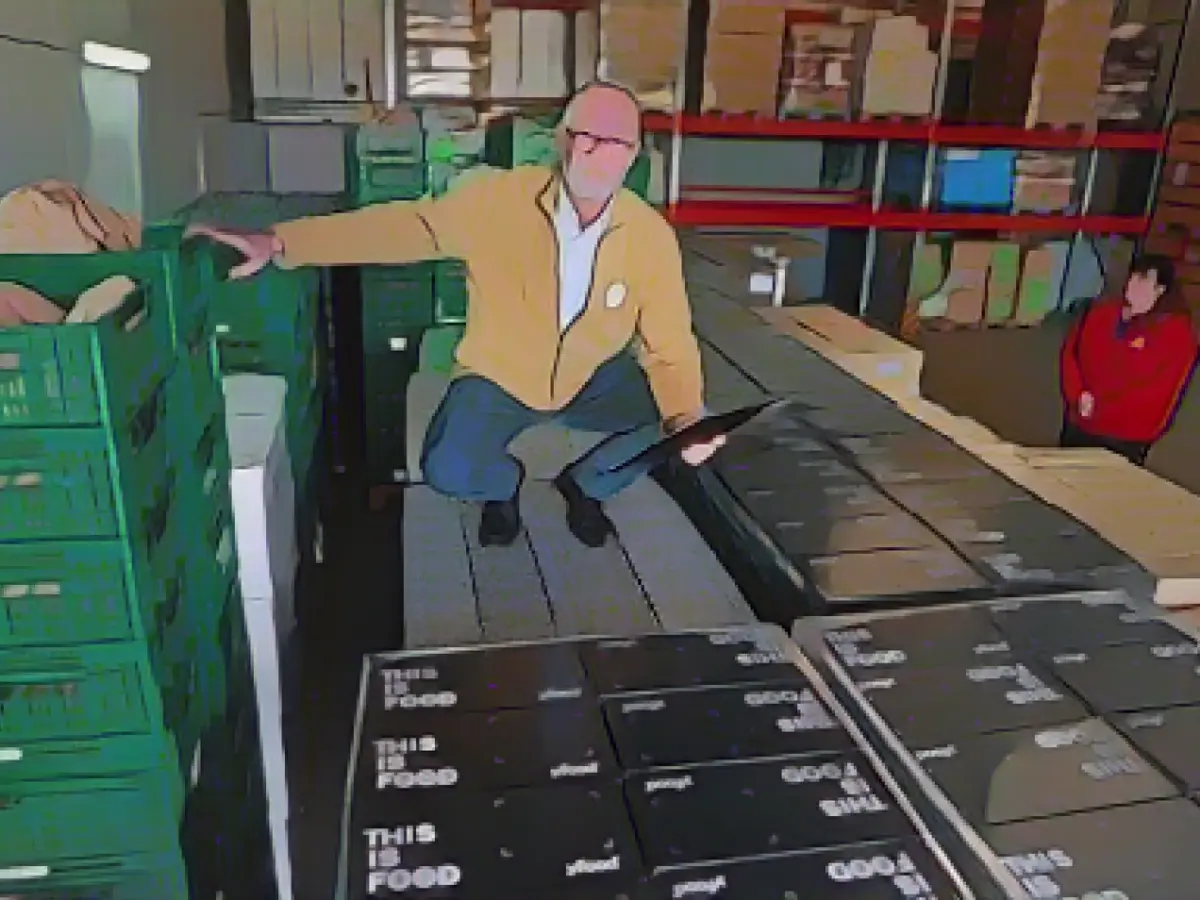Needy people - Tafel: More goods thanks to professional logistics
The food banks in Saxony-Anhalt are helping more and more people with food and everyday necessities. The number of users has risen by ten percent within a year, said Kai-Gerrit Bädje, chairman of the state food bank.
Around 66,000 to 67,000 people now regularly use the food banks. The 35 or so food banks in the state are coping with the growing numbers in different ways. While there can be bottlenecks in rural areas such as the Altmark, the food banks in the big cities are well positioned, says Bädje. In Halle and Magdeburg, the number of users has also increased significantly.
According to the state chairman, the fact that more people are coming to the food banks is due to inflation. "The need is becoming clear much, much faster." More people with small pensions and low incomes are picking up food, as are many single parents and immigrants.
In Bädje's view, discussions about increasing the citizen's allowance, as was the case recently, or other social benefits are out of the question. As managing director of the Awo district association in Harz, he sees the growing numbers of debtor and insolvency counseling. "The utility bills are only just starting to come in." The expiring energy price brake is another factor. Bädje also expects the number of people using the food bank to rise in 2024.
In order to meet the growing demand, the food banks have professionalized their logistics. There is a central warehouse on the A2 and a deep-freeze warehouse at a company in Zerbst. The food banks in the area are supplied from there. The quantities handled by the food banks have grown. According to Bädje, in 2021 it was 1000 euro pallets, in 2022 it was 2000 pallets and this year it was already more than 2800. Next year it could be 3200 pallets.
According to Bädje, around 60 percent of the goods come from food retailers and manufacturers, which are also redistributed via the Tafel-Bundesverband, 20 percent are goods from the local area and a further 20 percent are so-called returns from the mail-order company Amazon. The background to this is that no more goods are to be destroyed as in the past. And so, according to the chairman of the food bank, it sometimes happens that a pallet full of electrical cabinets for households or a pallet of hula hoops arrives at the central warehouse in Hohenerxleben.
Yoghurt, fruit and vegetables and other foodstuffs can be collected from the food banks by those in need. Long-life goods such as pasta and rice have been less common for some time now. It is very difficult with meat and sausage products. "We rarely have them in the central warehouse," said Bädje. Some food banks have a sausage producer nearby, so the supply can be larger, but this is not the case for many in rural areas.
"I think we're on a pretty good path for Saxony-Anhalt," said Bädje. Among the twelve state associations, Saxony-Anhalt is in the top third in terms of acceptance rates. The task now is to secure the years from 2025 onwards. This includes gaining long-term financial support. The state-wide logistics recently cost 70,000 euros a year. Several organizations help the food banks with money, and the state of Saxony-Anhalt also supports the work. The head of the state food bank described the amount of money donated as relatively constant.
The work of local volunteers is important for the food banks. According to the most recent survey, around 56 percent of employees work on a voluntary basis, said Bädje. 35 percent are employed through job opportunities, for example by job centers, and 9 percent are full-time employees. In view of the developments on the job market, the food banks need to make more changes to their work organization, said Bädje. Work at the food bank on a daily basis will become rarer, but it will be necessary to see how employees can be recruited to work on an hourly basis. This would involve other parts of the day. "We urgently need to think about this," said Bädje.
Read also:
- A clan member is punished here
- Traffic lawyer warns: Don't talk to the police!
- Will he be convicted as Jutta's murderer after 37 years?
- He also wanted to kill his cousin
- Despite the challenges in rural areas like Altmark, food banks in cities like Halle and Magdeburg in Saxony-Anhalt have seen a significant increase in users due to inflation.
- The regional food bank in Saxony-Anhalt, led by Kai-Gerrit Bädje, relies on professional logistics to meet the growing demand for food and daily necessities, with around 60% of goods coming from retailers and manufacturers.
- Single parents, as well as many immigrants, are among the individuals seeking food assistance from the food banks due to the rising costs and inflation.
- To cope with the increasing demand, Bädje has implemented central warehouses in Magdeburg and Zerbst, supplying food banks with pallets of goods, including electrical cabinets and hula hoops from Amazon returns.
- Discussions about increasing social benefits, such as the citizen's allowance, may not be feasible, as per Bädje, who sees a growing need for debtor and insolvency counseling in his role as managing director of the Awo district association in Harz.
- As the turn of the year approaches and the energy price brake expires, Bädje anticipates the number of food bank users to continue rising in 2024, emphasizing the importance of secure financial support for the future.
Source: www.stern.de








